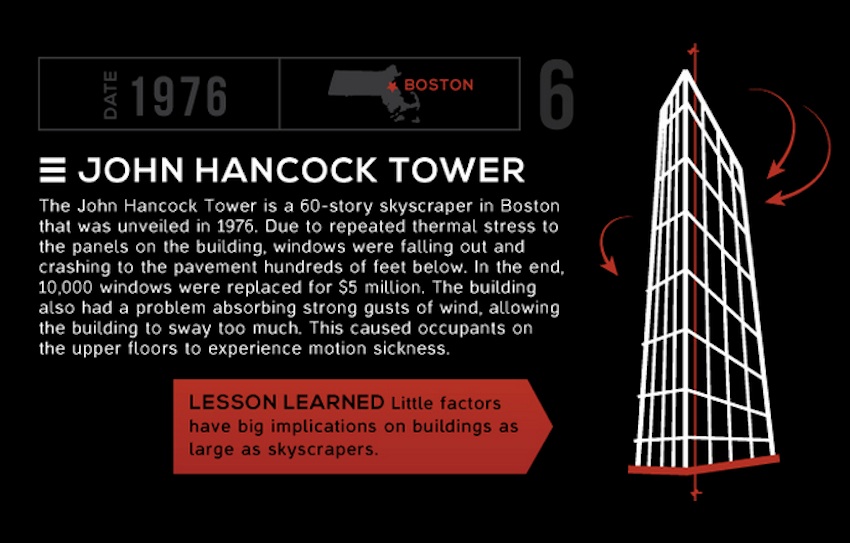Architecture School Calls John Hancock Building a ‘Failure By Design’

A San Diego school for architecture has put one of Boston’s most iconic structures on a list of poorly designed buildings over the centuries, comparing it to nearly-falling-over follies like the Leaning Tower of Pisa.
According to the NewSchool of Architecture and Design in California, there have been a number of “failures” when it comes to construction, one of which, they claim, is the John Hancock building. “Everyone makes mistakes. But when seemingly minor blunders are made in designing and building structures, the results can be catastrophic,” the school said in a statement accompanying an infographic that lists the top 10 worst designs, according to professors from the school.
The 60-story, 790-foot skyscraper was completed in 1976 and was designed by Henry Cobb. The large tower was built with the “glass factor” in mind, which allows more views of the city, and more light into the building. According to the Hancock Tower website, it is the only office building in Boston recognized by the American Institute of Architects as one of the nation’s most beloved buildings.
But the architecture school still found something to snark at, like the fact that glass panes from the building at one time would fall off, and come crashing to the ground below. According to a Boston Globe article from 1996, which won a Pulitzer Prize for criticism, here is what happened:
The crisis came in a winter gale on the night of Jan. 20, 1973, while the tower was still under construction. Gusts reached 75 miles per hour at the upper floors. Huge panels of glass, each weighing 500 pounds, shattered and dropped like sequins off a dress, smashing into other windows on their way down. In all, at least 65 fell.
While the Hancock is hailed today for its beauty—and falling glass is no longer a fear—the architectural school still added it to the list of things to learn from when constructing a building. The list also included structures like the Lighthouse of Alexandria, built in 280 B.C., which they said was one of the Seven Wonders of the World before it collapsed during an earthquake in 1303. The top “blunder” according to the school was the Fidenae amphitheater, a structure built out of wood that was destroyed because of the excessive weight from people visiting it to view gladiator fights in 27 A.D.


